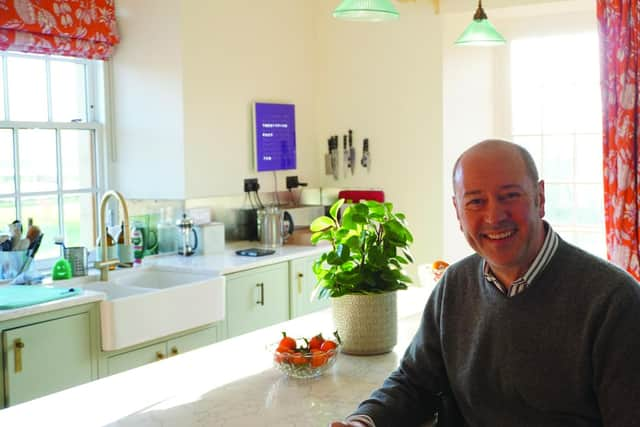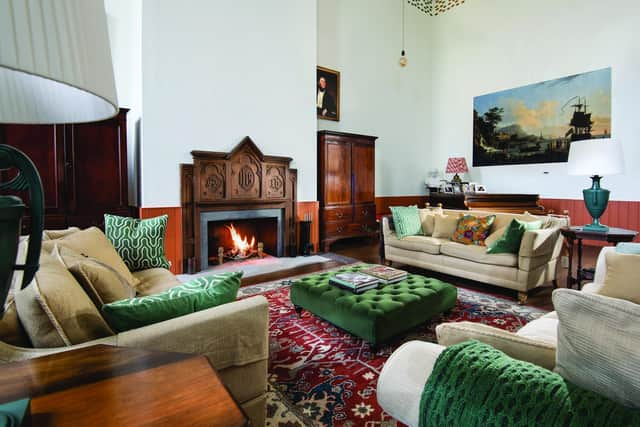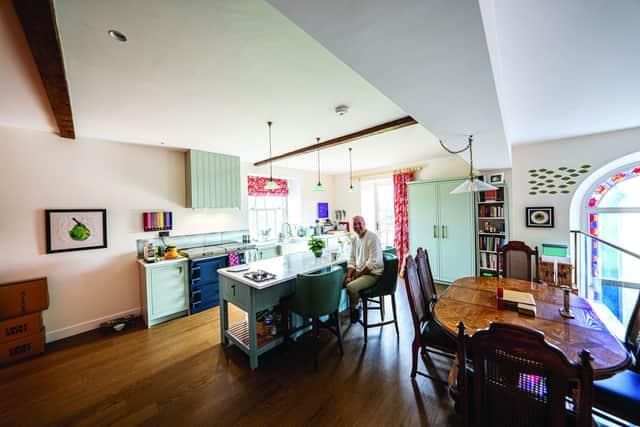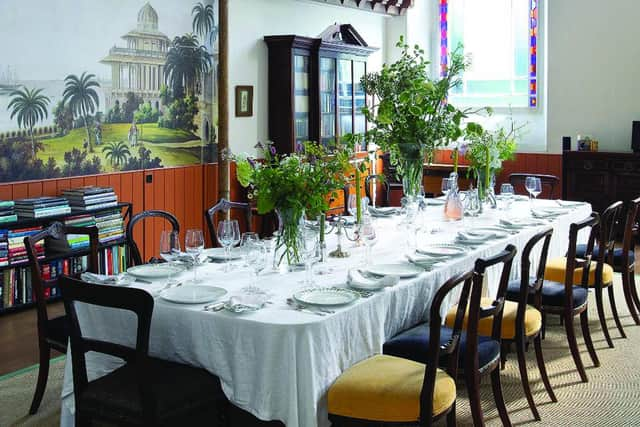Scotsman Homes: True believers in new country living
So many church projects end up compromised, with the original beauty lost in the drive to create bedrooms, kitchens and bathrooms. But one innovative design of a former Church of Scotland site is a fascinating example of what can be achieved.
It is owned by interior designer and former president of the British Institute of Interior Design Dean Keyworth, pictured above, who transformed the building into a home with his husband, Gavin Hilton. Dean recalls: “In 2008, my in-laws were living in Kelso and had downsized, so we were looking to buy something nearby so we could come and stay and be reasonably close.”
Advertisement
Hide AdAdvertisement
Hide AdWhat Dean and Gavin found was very much off-brief – not least because it was over the Border in Northumberland, in the village of Lowick. The decommissioned church, which hadn’t been used in 20 years, dates from 1821. The couple’s first attempt to acquire the building failed, as they were outbid, but the building came back on to the market in 2017, with no conversion work having been carried out in the meantime.


This time their bid was successful, despite only lukewarm encouragement from family members. Dean admits: “My late mother-in-law described it as ‘very dreich’ on first seeing it from the road – that side is a bit imposing. But the south side of the building faces onto Lowick Common and then on to the Cheviot Hills and has three huge arched stained-glass windows.”
It is one of only a very few Church of Scotland kirks that isn’t actually in Scotland, and Dean saw the potential in the shape of the interior, and the stark beauty of the building and its setting. He explains: “It is very plain, very Presbyterian. What I really wanted was to keep the main body of the church, this incredible double-height room, as so often when you see a church conversion they have chopped windows in half to make a mezzanine, which destroys the integrity of the original architecture.”
Lowick Old Church is B-listed and as it was to be a complete conversion to a residential building, there were two lots of regulations to contend with. The whole project took three years. Dean says: “We had interruptions because of Covid, and there were also delays in planning – the previous owner had detailed a large modern staircase, but we didn’t want it. So instead of just tweaking the listed building consent, we had to reapply from scratch.”
Once the floor plan was approved – a large main entertaining room, a kitchen on the first-floor gallery which once housed the choir, two ensuite bedrooms in the space below, and a loft conversion housing another two bedrooms and a bathroom – there were practical difficulties in the execution.


Dean remembers: “During the renovation we discovered that all the timber beams holding the gallery weren’t up to scratch, so the whole thing had to be dismantled and a steel frame inserted, and then the panelling was put back – it was a much bigger undertaking than we had thought at the outset.”
The loft conversion was another huge job, involving craning in three 12-metre beams. But such introductions to the structure of the building allowed the main space to remain, and the stunning 12m x 12m room has a two metre-high ceiling.
The design won a Georgian Group Highly Commended award for the best conversion of a building from that era last year.
Advertisement
Hide AdAdvertisement
Hide AdHaving completed the structural work, Dean was keen that the interiors fitted the building. He says: “Part of my work does include helping clients with structural stuff, but my main passion is interior design.


“Sometimes when you watch programmes like Grand Designs, when it comes to the interior, either they have run out of money or they are just not as interested. But furnishing, finishes and decoration is a really important part of the whole project.”
He adds: “Because this is such a strong building, very Presbyterian, I wanted to be true to that, without making it too churchy.
“For instance it didn’t have a fireplace, obviously, so where the pulpit had been, we found a Victorian carved fire surround, with religious lettering which now looks as if it has always been there. The bathrooms too are deliberately plain and utilitarian with Crittall-style shower screens for thatpared-down, not-too-fussy style.”
“We were keen to keep everything local, either from the north-east or the Borders. The paint is Craig and Rose from Scotland and the kitchen is from County Durham; the furniture is from auction houses locally.”


This striking style he calls “New Country”, and this month he has published a book on this ethos, inspired by Lowick Old Church, but also showcasing some stunning renovations of rural properties on both sides of the Border.
He says: “The book was written to persuade readers that you can be really different with country style. You don’t have to go with brown furniture and Persian rugs. There are illustrations of really super modern conversions – a barn, for example, with plenty of colour that mixes up modern art and antiques.
“You don’t have to be in a city to have a sophisticated interior design style. On the practical side you can’t get away from mud and dogs in the country, so it has to function in that way but it doesn’t need to be limiting.”
Advertisement
Hide AdAdvertisement
Hide AdThe original plan was to use the Old Church as a holiday home, but the couple’s circumstances changed during the project.
“Because of Covid, Gavin was working from home, I was writing the book, so we spent all of our time here and we have really fallen in love with it. This is now our main home and we have a little place in London just for work. We have ended up changing our whole lives because of one property – but it has all been for the better.”